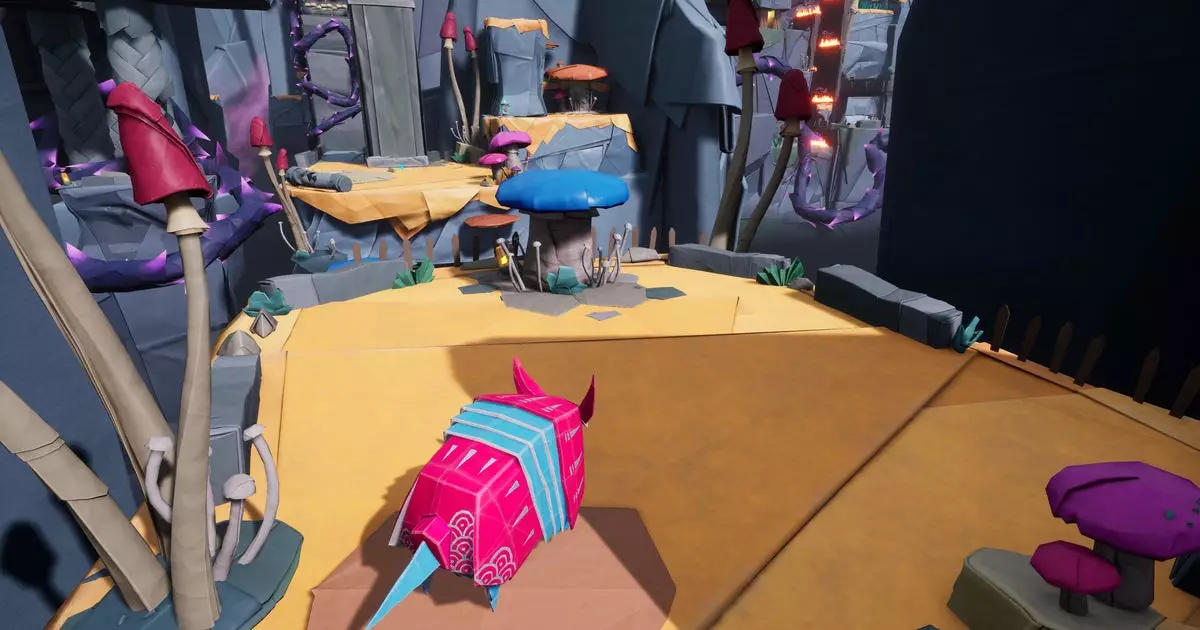The paradox of Hirogami lies at the heart of its premise: it is a digital game that venerates the craftsmanship of paper art within a narrative that critiques digital entrapments. This cognitive dissonance raises an essential question—how can one celebrate the fragility of paper while firmly anchoring the gameplay experience in the environmental concerns of a digital landscape? This duality is further complicated by the irony inherent in the game’s very existence. The protagonist, Hiro, represents a physical piece of paper, fluttering through a world compromised by digital “blight.” Yet, in doing so, Hirogami inadvertently echoes the sentiments of the very digital constructs it seeks to challenge.
With its black-and-white dichotomy between paper and pixels, the game evokes an inherent challenge; it stands as a critique of digital culture while simultaneously participating in it. Herein lies the challenge for any artist or storyteller: how to convey a meaningful message without becoming part of the machinery they wish to critique? Hirogami’s developers, Bandai Namco’s Singapore division, endeavor to convey the ephemeral beauty of paper art while embedding themselves in the digital milieu. But how effective will this be?
Gameplay Mechanics: Navigating the Origami Universe
As steered by its unique story, the gameplay mechanics of Hirogami transport players into a vibrant origami universe where transformation becomes a pivotal aspect of navigation and interaction. Players assume the role of Hiro, along with an impressive array of abilities that echo the flexibility and complexity of origami itself. Each transformation—from an agile frog to a formidable paper plane—serves as a vehicle to explore the game’s world while simultaneously underscoring the core mechanics that resonate with traditional origami art.
As the narrative unfolds, the goal is to “cleanse mind-warped inhabitants,” encapsulating not only a conventional gaming trope of enemy eradication but also a critique of the state of digital life. The call to explore every nook and cranny of this beautifully crafted paper world invites a comparative analysis to other games that prioritize exploration while wrestling with existential themes. The challenge of navigating this blend of delicate visual design and meaningful gameplay is crucial. The game creators intend to marry vibrant visuals with solid mechanics, hoping to enrich the player’s experience rather than reduce it to clichés.
Visually speaking, Hirogami’s decision to tie its art direction closely to origami introduces a refreshing aesthetic that piques curiosity. In an age where visual storytelling in video games often drifts toward realism or hyper-stylization, the lush whimsy of a paper universe offers a novel diversion. Everything appears designed with fragility in mind, challenging players to engage with it delicately. Yet, in its ambition to replicate this physical form of artistry, one cannot help but wonder if Hirogami risks being perceived as a mere gimmick rather than a substantial examination of the media it seeks to glorify.
Ultimately, the dialogue between art and gameplay can only flourish so far. The absence of a mini-game that simulates origami folding techniques could be seen as a missed opportunity to deepen player appreciation for a craft that requires patience and skill. Such an inclusion would have stood as a tribute to the form and function of origami, possibly enriching the player’s connection to Hiro’s journey and message.
Scheduled for release in 2025, Hirogami positions itself within an evolving landscape, characterized by an audience that increasingly grapples with the dichotomous nature of digital experiences. The balance it seeks between earnest homage to traditional artistry and engaging gameplay remains to be seen. Will it resonate with those who have grown weary amidst the clamor of the digital age? Or will it tread the fine line of irony too tightly, leaving audiences bewildered?
The legacy of games that highlight cultural art forms will depend not just on their aesthetic beauty but also on the emotional and cognitive engagement they inspire. Hirogami stands at the crossroads, a testament to the evolving relationship between humanity’s fragile art forms and the omnipresent digital experiences shaping our contemporary lives. As the release date approaches, anticipation hangs in the air, laced with the allure of hope for a graceful marriage of art and entertainment.

